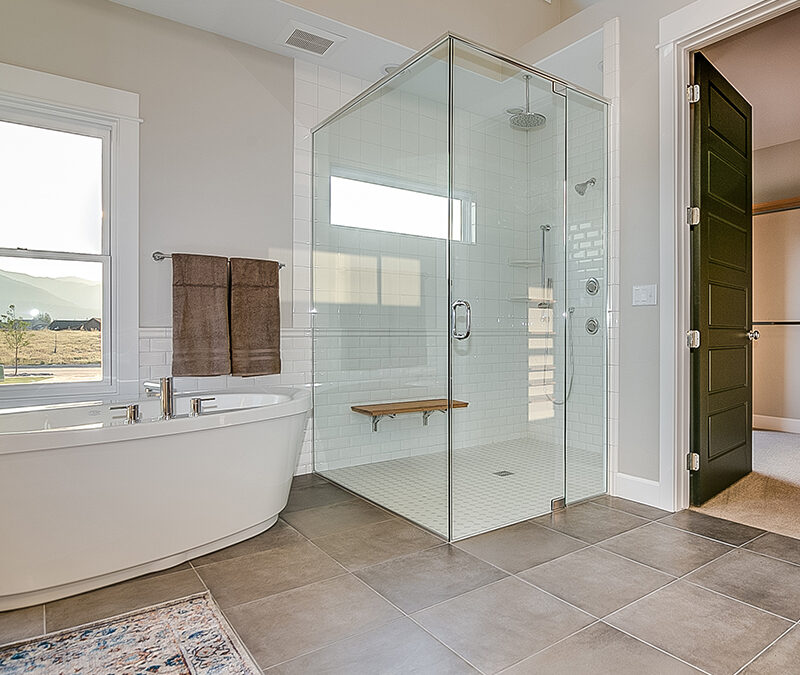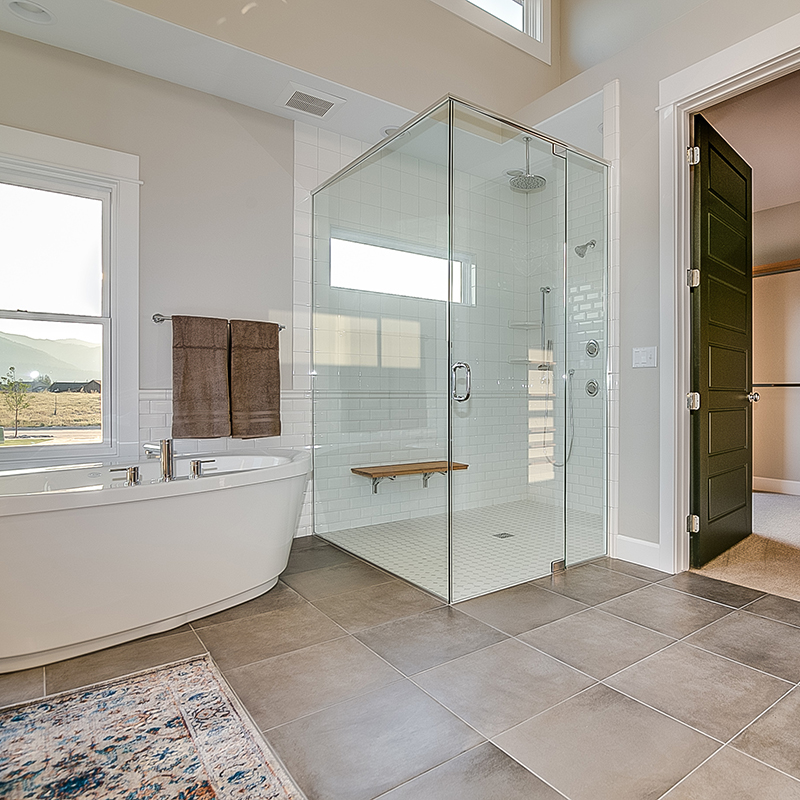
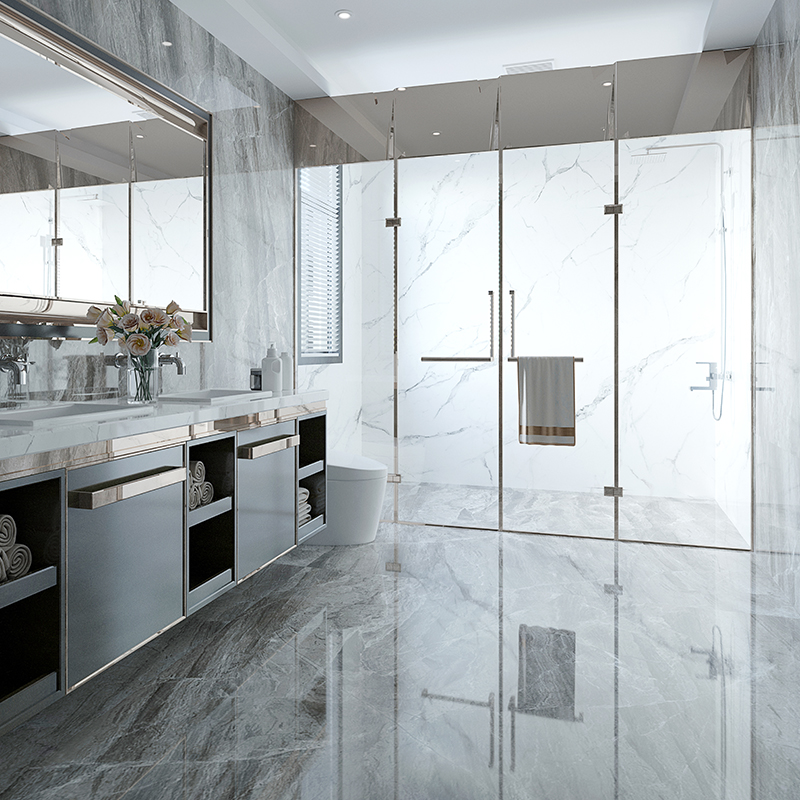
When selecting tile for your residential or commercial design project, you’ll find numerous options, including popular porcelain and ceramic tile products. While both ceramic and porcelain tiles are made from clay and fired in a kiln, there are distinct differences between the two materials. These tiles may look similar, but they have unique properties.This article will explore the differences between ceramic and porcelain tiles, including uses, durability, maintenance, cleaning, appearance, installation, costs, water and heat resistance, and other factors.
What is porcelain tile?
Porcelain tile uses refined clay, feldspar, quartz, and other raw materials and minerals to create a strong, high-performance surfacing product suitable for walls, floors, and other applications. Porcelain tile manufacturers combine the clay and other ingredients into a slurry that’s poured into molds and pressed to remove moisture. The molded material is fired at temperatures around 1,200° Celsius (2,100° Fahrenheit). Dyes, pigments, and high-resolution images are then added to the material’s surface. This high-fire material is stronger than ceramic tile and suitable for outdoor applications. Porcelain tile is a dense, hard, and heavy material that can be glazed to create a polished, satin, or matte finish. Unglazed porcelain tiles and slabs are also available to add more texture to designs.
What is ceramic tile?
Like porcelain tile, ceramic tile is made from clay and fired in a kiln. Ceramic tiles used to be made by hand and have a long history as a sought-after design material. Today’s ceramic tiles and slabs are made in factories where water, clay, sand, and talc are mixed, poured into a mold, and cured in a high-temperature kiln under pressure. The temperatures used are slightly lower than those used to create porcelain tile. Ceramic is typically fired to around 1,000°C or 1,830°F. Ceramic tiles can be either glazed or unglazed and come in a wide variety of colors and patterns; however, they aren’t as strong or moisture-resistant as porcelain tiles. To decide if ceramic or porcelain tiles are better for your project, let’s take a closer look at how they differ and the pros and cons of each.
What are the differences between porcelain and ceramic tile?
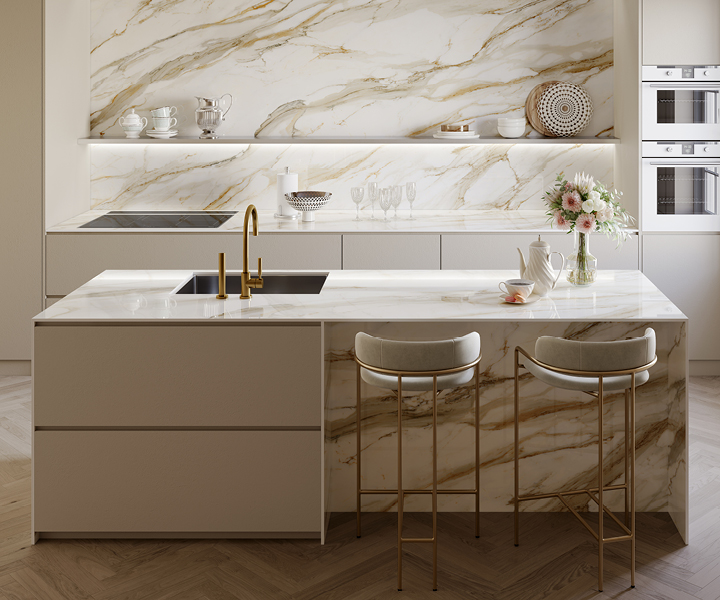
Ceramic and porcelain tiles share many similarities, but the manufacturing process for each material is different, leading to important distinctions in performance. Due to the high-temperature processing, porcelain is denser and more durable than porcelain; it’s also less porous, making it more resistant to stains and moisture. Porcelain is a better option for high-moisture environments, including bathrooms, showers, and outdoor environments. The initial cost of porcelain is greater than that of ceramic, but its durability, quality, and longevity generally make up for any price differences. While both materials can make a beautiful design statement, it’s essential to understand how they stack up against each other, so let’s take a deeper dive into their differences.
Appearance
Many porcelain products have a consistent color throughout the slab; these through-body options maintain a uniform color (and sometimes pattern) throughout the slab to minimize the appearance of any chips or damage. It’s important to note that not all porcelain tiles will have this through-body characteristic, so you’ll want to check the product descriptions and specifications carefully. In contrast, most ceramic tiles have a color glaze, so wear, chips, scratches, and damage will expose other colors beneath the surface. Porcelain offers more design choices, colors, and finishes, including highly realistic wood and stone visuals.
Care and Cleaning
Both porcelain and ceramic tile are relatively easy to clean with water, gentle cleansers, soft clothes, mops, and brooms. Porcelain is usually more stain and scratch resistant than ceramic, depending on the quality of its glaze or finish. Porcelain is also non-porous, making it more moisture-resistant. While it’s a good idea to clean up any liquid spills as soon as possible, it’s imperative to thoroughly clean and dry porcelain quickly to prevent moisture absorption.
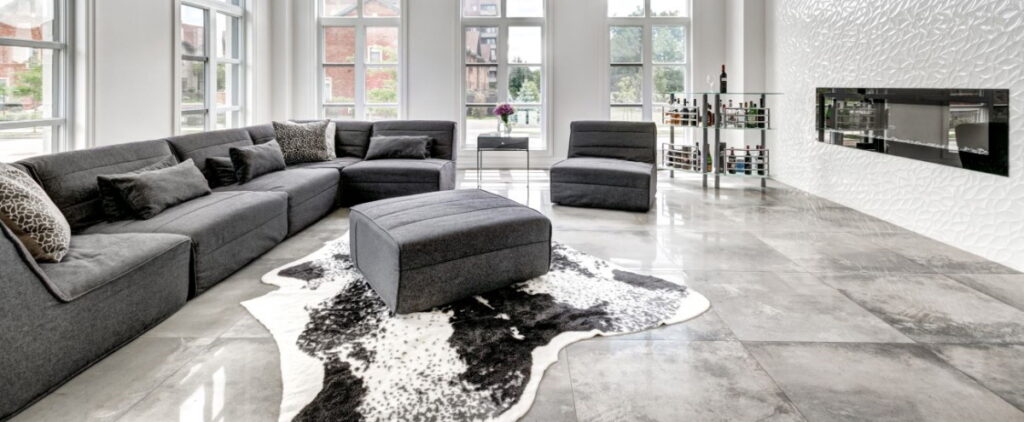
Durability
Due to the differences in manufacturing processes, ceramic tiles are more prone to breaking and cracking than porcelain tiles. Once it’s installed, porcelain tile can withstand more wear and tear, making it a better option for high-traffic and high-demand areas. Still, less dense ceramic tile may be less prone to cracking during installation and fabrication. Both products offer a long lifespan when cared for properly.
Installation
The density of porcelain makes it brittle and slightly more challenging to work with, cut, and install. Porcelain tile is also heavier, making it more difficult to install, especially vertically on walls, in showers, and as a backsplash. However, with ceramic tile, you may need to apply a sealant to make it less porous, adding to the installation time and process.
Cost
Generally speaking, ceramic tile is less expensive than porcelain tile, depending on the quality, style, and manufacturer. Ceramic tile may be a better option for budget-conscious projects as the average cost for ceramic is between $3-$7 per square foot installed, while porcelain tile costs around $9.50 to $25 per square foot installed. High-quality ceramic and porcelain tiles may exceed these averages.
Which is better, porcelain or ceramic tile?
Both ceramic and porcelain are durable and attractive design choices for your home design needs. However, porcelain has a broader range of uses and applications. Porcelain’s non-porous nature means it can be used outdoors. Porcelain resists moisture and won’t crack in freezing temperatures. Porcelain is also better for showers, bathrooms, wet environments, and commercial applications.
Top brands of porcelain and ceramic tile?
- American Olean
- Arizona Tile
- Caesar Ceramics
- Crossville
- Daltile
- Emser
- Florida Tile
- Marazzi
- MSI Tile
- Porcelanosa
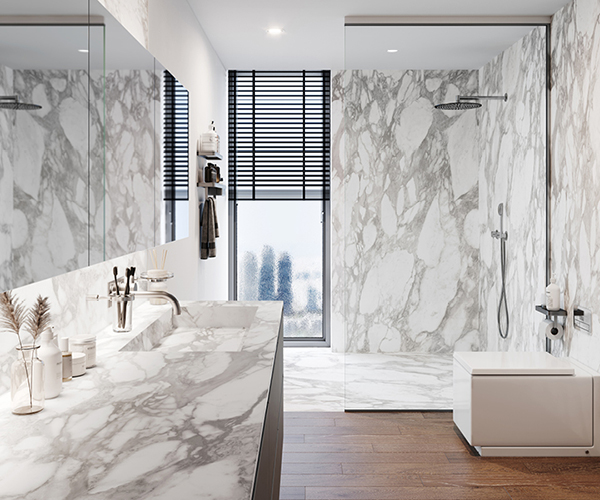
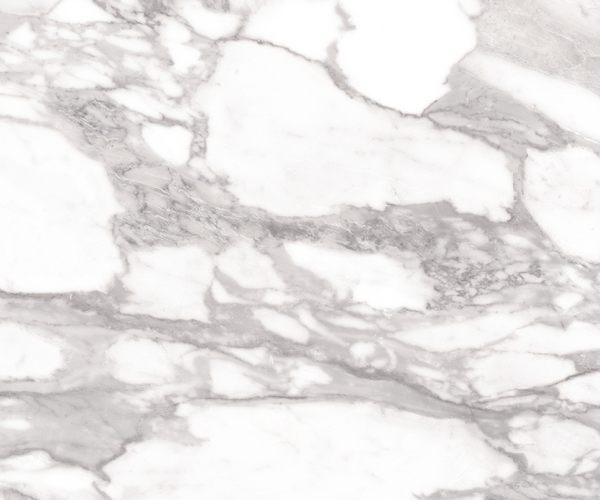
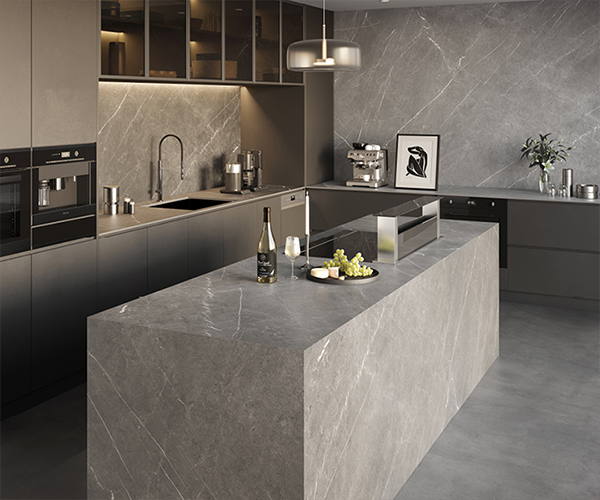
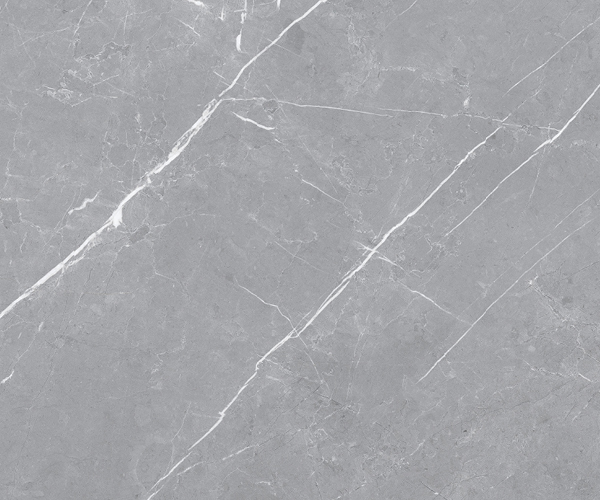
Recently, LX Hausys entered the market with its TERACANTO porcelain line, which offers through-vein patterning in some of its collections and advanced UV resistance. LX Hausys is well known and respected for its product portfolio and quality, including its VIATERA quartz, HIMACS solid surface, and HFLOR flooring products.
Contact Us
If you’re trying to decide between porcelain or ceramic tile or need assistance with any surfacing or flooring products, the experts at LX Hausys can help. We’ll be glad to consult with you. Contact us about your project, and one of our representatives will respond quickly.

